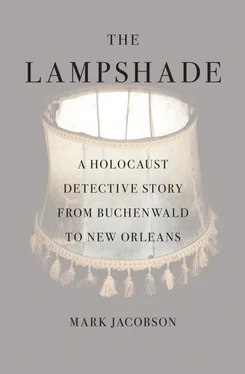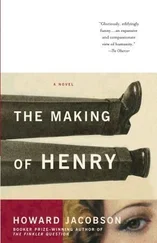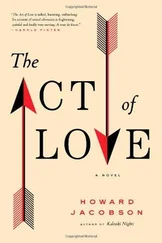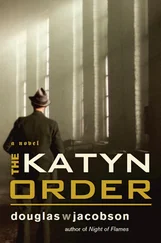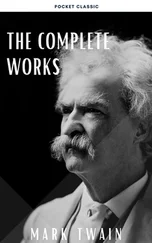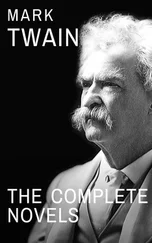Whatever the merits of the suit, there could be no arguing the dismal performance of the DA’s office. In 2003 and 2004, with New Orleans in contention as the most crime-ridden city in the country, fewer than 12 percent of all homicide and attempted homicide cases resulted in conviction. Since Katrina, with the courts and police department in disarray, that number had decreased even further. In 2006 Jordan’s office, operating under Louisiana’s much-lambasted “701” law, which required the release of prisoners not indicted within sixty days of their arrest, managed to bring only 7 percent of all felony cases to trial.
These numbers were a disaster, nothing that should ever happen in a major city. But then again, could anyone really claim that New Orleans was a major city? Barely three hundred thousand residents lived in the town, half the 1950 population. It wasn’t even the biggest city in Louisiana anymore; Baton Rouge, that former governmental backwater of frat houses and Taco Bells, had more people. As of 2007, New Orleans was listed as the fifty-ninth-highest population center in the country, right behind Aurora, Colorado, wherever that was. The mystery was how so many of the remaining inhabitants still found such large numbers of other people to shoot and kill.
The chronicling of the nearly daily deaths became an obsessional pastime for the city’s bloggers. In the weeks before I visited Dave Dominici at the OPP, one Internet site, the New Orleans Murder Blog, provided the following content: On August 12, “A man and a woman were shot to death Saturday morning in the Village de l’Est neighborhood of eastern New Orleans, police reported.” On August 14, “Two people were shot fatally and a third wounded at North Villere and St. Philip streets, near Armstrong Park in the Treme neighborhood, New Orleans, police said.” On August 15, “A man shot multiple times in the 7700 block of Chef Menteur Highway, Garry Flot, an information officer for New Orleans police, said.” On August 16, “A New Orleans woman was critically injured Wednesday night when a man entered a Mid-City bar and slashed her throat, police said.”
A few days later the Murder Blog carried the following account of an apparent murder in the Seventh Ward: “The deceased was a 25-year-old light-complexioned African-American with a gold tooth had the following tattoos ‘Ms. Coco,’ on the left thigh; a drawing of a naked woman on the left inner forearm; ‘Big Mike,’ on the outer left upper arm; ‘Fatt’ or ‘Fatty,’ on the left arm; ‘Darryl,’ on the left wrist; ‘Belinda,’ on the left hand; a butterfly on the back of the left shoulder; ‘B,’ in the middle of the back; and ‘Queen,’ on one buttock, and ‘B@#$HV,’ or ‘B@#$HY,’ on the other buttock. He wore a long blond wig, makeup, a short blue skirt, three tanktops and gold shoes.”
Mayor Ray Nagin’s commentary on the steady drumbeat of doom proved less than helpful. In response to the shooting death of two brothers who themselves had been implicated in fourteen murders, the mayor said the killings were “not good for us, but it also keeps the New Orleans brand out there.”
“I wouldn’t say that the whole city is trying to kill itself, but sometimes it sure does seem that way,” the Orleans Parish coroner Frank Minyard told me. Dressed in his customary white lab coat, a patrician shock of silver hair rakishly combed atop a highball-red face, Minyard is about as close to a Walker Percy character as you can find in the Crescent City these days.
Once a highly paid uptown gynecologist, Minyard, seeking “something with more meaning to it,” first became coroner in 1974. He has been reelected eight times, always using the same campaign poster, a shot of a fortyish version of himself dressed in a white linen suit blowing his beloved cornet on a Mississippi River levee. It is this image, along with unimpeachable homeboy credentials like residence papers from Charity Hospital and a penchant for volunteering remarks like “As a medical man I thought the efficacy of Viagra might wear out when nearing eighty, but I’m happy to report this is not the case” that have made Minyard a favorite of New Orleans local color writers.
One of Minyard’s NPR interviews, given shortly after Katrina, stands out. Speaking from St. Gabriel, Louisiana, where the feds had belatedly set up a massive high-tech morgue, Minyard was asked if he could foresee an end to all the suffering.
“I don’t think so,” Minyard said in his loping, smooth-syllabled drawl. “You see, these are my people, every one of them. I get emotional about it. I get emotional about the people, I get emotional about the city, I get emotional about the music. You know, I play trumpet. I have a band. A couple of weeks ago—I hadn’t practiced or played because of the hurricane—I took out my trumpet in the quiet place of my trailer, and I played ‘Do You Know What It Means to Miss New Orleans?’. And I started crying. The devastation not only of the place but of the people and our lives—none of us will ever be the same.”
It was an overworked trope by then, singing and playing “Do You Know What It Means to Miss New Orleans?”, which was written by Eddie DeLange and Louis Alter in 1946 for a Hollywood musical called New Orleans that featured Billie Holiday playing a domestic. Louis Armstrong’s version was classic, true, but hearing the tune every time an out-of-town newsman appeared in a windswept yellow slicker could drive you crazy. Minyard’s a cappella version, however, just the first two lines, “Do you know what it means to miss New Orleans / I miss it each night and day,” sung by the doctor of the dead from inside a government-issue trailer parked in a postmodern morgue, returned to the sublime.
“Great song,” Minyard said to finish the interview.
I’d come over to talk to Minyard about the lampshade, which, after all, had been found within his jurisdiction. Sitting at his makeshift desk in the lobby of the funeral home on Martin Luther King Boulevard—his old office at Tulane and Broad had been flooded in the storm, trapping him for three days—Minyard looked through the pictures of the lampshade I had stored on my computer.
“You say it was the guy from the cemetery case that had it?” Minyard inquired. A Louis Prima fan, Minyard remembered the mausoleum looting well. Dave Dominici’s involvement with something like the lampshade was “a heck of a coincidence,” the coroner said.
I asked him how he might have handled the lampshade case. “You mean, if I was responsible for finding out what it was?” he replied, thinking a moment. “That would be tough because, from our point of view, you’d have to prove that a crime had been committed. If it is really sixty years old, from the war, then what can you do here in New Orleans? I don’t think it would be illegal just to have it.”
Minyard called in Alvaro Hunt, his chief forensic pathologist. Hunt, a sweet-faced man who has worked with Minyard on and off for thirty-five years, stared at the lampshade photos awhile. “It looks like it’s been tanned. Definitely tanned,” Hunt said. He thought he saw a particular skin pattern but it was impossible to say anything definitive from looking at a photo.
“He’s got some DNA on the thing,” Minyard said, handing Hunt the printout of the Bode lab findings. Hunt looked the report over before saying, “They could only get the mitochondrial, huh? That makes sense; the sample had to be very degraded. This sort of work is way beyond us right now.”
This was because more than two years after the storm, Orleans Parish still didn’t have an operational crime lab. Much of the work was being sent to LSU in Baton Rouge. Minyard took another look at the lampshade picture. Like Shiya Ribowsky, who’d seen so many shattered parts of former humanity after 9/11, the coroner of New Orleans, the Murder Capital, shook his head.
Читать дальше
